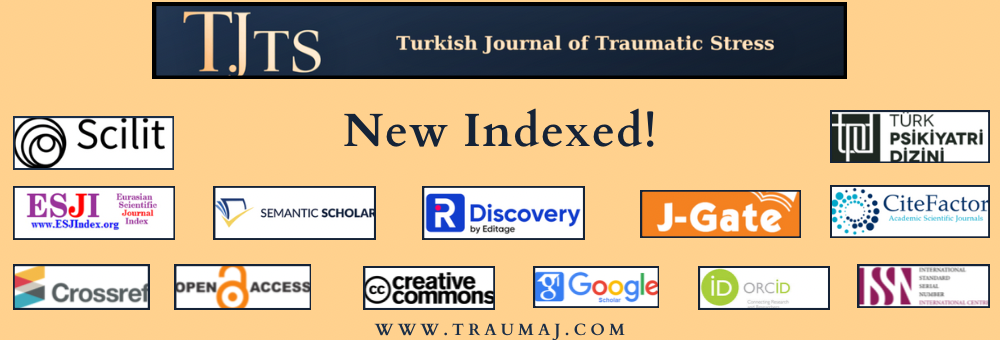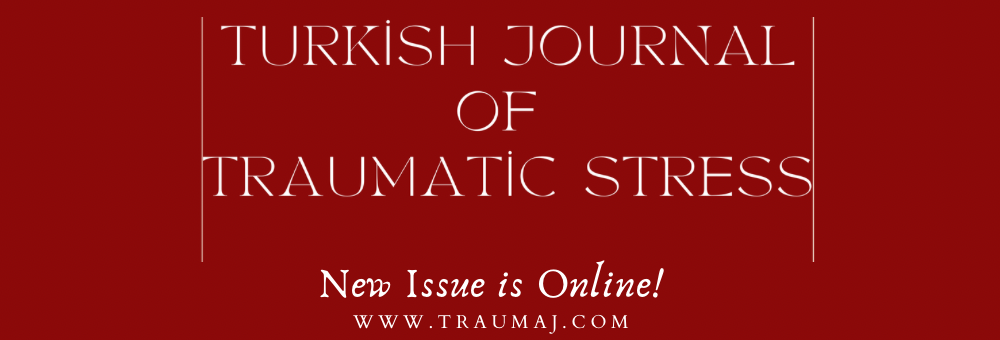Impact of Group Flash Technique on Reducing Exam Anxiety in Students
Exam Anxiety and Group Flash Technique
DOI:
https://doi.org/10.63175/tjts.12Keywords:
Exam anxiety, Test anxiety, EMDR, Flash Technique, Group-based interventionAbstract
Background: This study explores the impact of the Group Flash Technique on reducing test anxiety among university students. Test anxiety, a prevalent issue in academic settings, negatively affects cognitive functions and academic performance. The Flash Technique, incorporates bilateral stimulation and positive imagery to address distressing memories without direct focus on the trauma.
Methods: A single-session intervention was conducted with 35 undergraduate psychology students from Istanbul Gelişim University and Istanbul Bilgi University. Participants were assessed for test anxiety levels before and after the intervention using the Test Anxiety Inventory (TAI), Adverse Childhood Experiences Scale (ACE) andImpact of Events Scale (IES). During the session, participants engaged in a structured protocol combining eye movements, tapping, and positive memory recall to reduce Subjective Units of Distress (SUD) scores related to test anxiety.
Results: The mean age of the participants included in the study was 26.71 (9.43) years and 85.7% (n=30) were female. The change in IES-R; Hyperarousal (F=6.238, p=0.018, η²=0.155), TAI; Anxiety (F=7.494, p=0.010, η²=0.181), Affectivity (F=5.347, p=0.027, η²=0.136),Total (F=7.111, p=0.012, η²=0.173), scores were determined to be statistically significantly lower compared to the before the application.
Conclusion: This pilot study highlights the Flash Technique’s feasibility as an effective, safe, group-based intervention for managing test anxiety. Future research should examine its application with clinical populations and assess long-term effects through multi-session protocols.
Keywords: Exam anxiety, test anxiety, flash technique, group-based intervention
References
1. Cassady JC. Test anxiety: contemporary theories and implications for learning. In: Anxiety in Schools: The Causes, Consequences, and Solutions for Academic Anxieties. 2010;2:7-26.
2. Zeidner M. Test Anxiety. Kluwer Academic Publishers; 1998. https://doi.org/10.1007/b109548
3. Cizek G, Burg S. Addressing Test Anxiety in a High-Stakes Environment. Corwin Press; 2006.
4. Connor MJ. Pupil stress and standard assessment tasks (SATs): an update. Emotional and Behavioural Difficulties. 2003;8(2):101-107.
5. Topp R. Effect of relaxation or exercise on undergraduates’ test anxiety. Perceptual and Motor Skills. 1989;69(1):35-41.
6. Cassady JC, Johnson RE. Cognitive test anxiety and academic performance. Contemporary Educational Psychology. 2002;27(2):270-295.
7. Wine J. Test anxiety and direction of attention. Psychological Bulletin. 1971;76(2):92.
8. Von der Embse N, Jester D, Roy D, Post J. Test anxiety effects, predictors, and correlates: a 30-year meta-analytic review. Journal of Affective Disorders. 2018;227:483-493.
9. Chapell MS, Blanding ZB, Silverstein ME, et al. Test anxiety and academic performance in undergraduate and graduate students. Journal of Educational Psychology. 2005;97(2):268.
10. Balogun AG, Balogun SK, Onyencho CV. Test anxiety and academic performance among undergraduates: the moderating role of achievement motivation. The Spanish Journal of Psychology. 2017;20:E14.
11. Chin EC, Williams MW, Taylor JE, Harvey ST. The influence of negative affect on test anxiety and academic performance: an examination of the tripartite model of emotions. Learning and Individual Differences. 2017;54:1-8.
12. Shapiro F. Eye Movement Desensitization and Reprocessing (EMDR): Basic Principles, Protocols, and Procedures. Guilford Press; 2001.
13. Barker RT, Barker SB. The use of EMDR in reducing presentation anxiety. Journal of EMDR Practice and Research. 2007;1(2):100-108.
14. De Jongh A, ten Broeke E. EMDR and the anxiety disorders: exploring the current status. Journal of EMDR Practice and Research. 2009;3(3):133-140.
15. Yunitri N, Kao CC, Chu H, et al. The effectiveness of eye movement desensitization and reprocessing toward anxiety disorder: a meta-analysis of randomized controlled trials. Journal of Psychiatric Research. 2020;123:102-113.
16. Yaşar AB, Konuk E, Kavakçı Ö, et al. A randomized-controlled trial of EMDR flash technique on traumatic symptoms, depression, anxiety, stress, and life of quality with individuals who have experienced a traffic accident. Frontiers in Psychology. 2022;13:845481.
17. Shapiro F. Efficacy of the eye movement desensitization procedure in the treatment of traumatic memories. Journal of Traumatic Stress. 1989;2(2):199-223. http://doi.wiley.com/10.1002/jts.2490020207
18. Bauman W, Melnyk WT. A controlled comparison of eye movements and finger tapping in the treatment of test anxiety. Journal of Behavior Therapy and Experimental Psychiatry. 1994;25(1):29-33.
19. Power K, McGoldrick T, Brown K, et al. A controlled comparison of eye movement desensitization and reprocessing versus exposure plus cognitive restructuring versus waiting list in the treatment of post-traumatic stress disorder. Clinical Psychology & Psychotherapy. 2002;9(5):299-318.
20. Manfield P, Lovett J, Engel L, Manfield D. Use of the flash technique in EMDR therapy: four case examples. Journal of EMDR Practice and Research. 2017;11(4):195-205.
21. Manfield P. Using the flash technique to support EMDR treatment. Journal of EMDR Practice and Research. 2021;15(2):120-127.
22. Yaşar AB, Gündoğmuş İ, Gündüz A, Konuk E. The effects of single session EMDR flash technique group application on traumatic symptoms. Israel Journal of Psychiatry. 2021;58(2):41-46.
23. Spielberger CD. Test Anxiety Inventory: Preliminary Professional Manual. Consulting Psychologists Press; 1980.
24. Öner N. Sınav Kaygı Envanteri El Kitabı. Yöret Vakfı; 1990.
25. Öner N, Kaymak DA. The transliteral equivalence and the reliability of the Turkish TAI. Unpublished manuscript. University of Missouri-Columbia; 1987.
26. Gündüz A, Yaşar AB, Gündoğmuş İ, Savran C, Konuk E. Çocukluk Çağı Olumsuz Yaşantılar Ölçeği Türkçe Formunun geçerlilik ve güvenilirlik çalışması. Anadolu Psikiyatri Dergisi. 2018;19(1):68-75.
27. Horowitz M, Wilner N, Alvarez W. Impact of Event Scale: a measure of subjective stress. Psychosomatic Medicine. 1979;41(3):209-218.
28. Çorapçıoğlu A, Yargıç İ, Geyran P, Kocabaşoğlu N. "Olayların Etkisi Ölçeği" (IES-R) Türkçe versiyonunun geçerlilik ve güvenirliği. New/Yeni Symposium: Psikiyatri, Nöroloji ve Davranış Bilimleri Dergisi. 2006;44(1):14-22.
29. Wong SL. Flash technique group protocol for highly dissociative clients in a homeless shelter: a clinical report. Journal of EMDR Practice & Research. 2019;13(1):20.
30. Manfield, P., Lovett, J., Engel, L., & Manfield, D. Use of the flash technique in EMDR therapy: four case examples. Journal of EMDR Practice and Research.2017; 11(4): 195-205.
31. Avcı, M. Sınav Kaygısı Olan Ergenlerde Flash Tekniğinin Tek Seanslık Etkisinin İncelenmesi: Bir Grup Uygulaması. Uluslararası Anadolu Sosyal Bilimler Dergisi. 2023; 7(1): 222-231.
32. Susanty, E. Treatment EMDR (Eye Movement Desensitization and Reprocessing) bagi Korban Bencana Gempa: Studi Kasus. Jurnal Reliabel.2014: 1(1).

Downloads
Published
How to Cite
Issue
Section
License
Copyright (c) 2025 Alişan Burak Yaşar, İbrahim Gündoğmuş, Simay Yılmaz, Derin Kubilay, Ersin Uygun, Önder Kavakçı

This work is licensed under a Creative Commons Attribution 4.0 International License.







